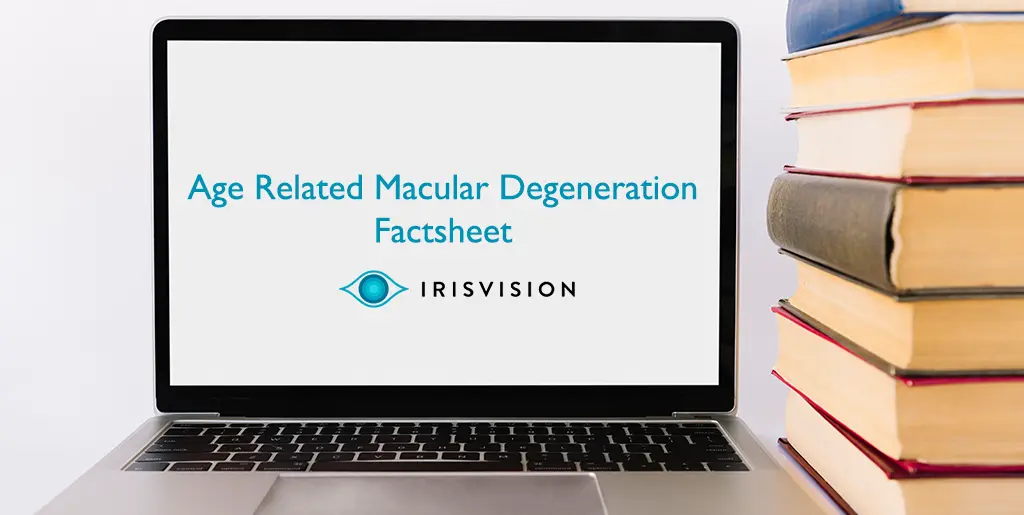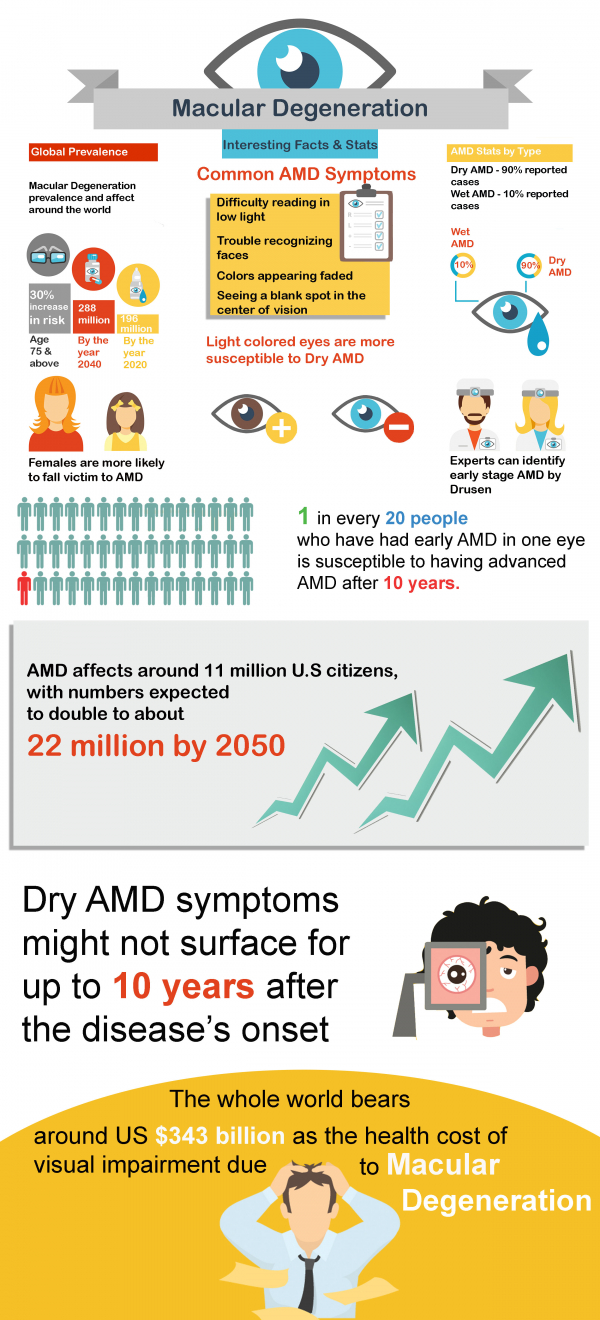
#LIVE2.0 #Review
A group of eye disorders affecting the central region of the retina (thus affecting the central field of vision) is referred to collectively as “macular degeneration”. Since people over 65 years of age serve as the prime target zone for this disease, it is also labeled as the “Age Related Macular Degeneration” or “AMD”/ “ARMD”. It happens to be the single biggest factor behind legal blindness in developed nations of the world. Since macula sustains irreversible damage at the hands of this disease, it leads to the loss of the sharp, fine-detail, straight-ahead vision, affecting its victims’ ability to perform activities like reading, writing, driving, recognizing faces and so forth.
This write-up is a compilation of 40 interesting facts about AMD, segregated into a host of relevant sections.

The progression of AMD can be divided into three different stages:
Dry AMD symptoms might not surface for up to 10 years after the disease’s onset; sometimes, even longer if only one eye is affected when dry AMD symptoms appear eventually, they may include:
According to National Eye Institute:
Wet AMD can display all of the symptoms listed above for dry AMD as well as the following:
Major macular degeneration risk factors include:
There is no known cure for AMD as yet, but there are certain treatments that can help slow down the advancement of the disease. Some effective options include:
Eye supplements can help with Dry AMD. Your ophthalmologist will tell you what vitamins or minerals are recommended for your particular case of dry AMD, but these are found to be generally helpful.
Technology in the health sector is advancing particularly fast. Various low vision aids can help with macular degeneration, one of them is IrisVision – a vision-enhancing device comprised of a Samsung Gear VR headset and a smartphone. It has superlative features like IrisBubble, which lets you see clearly without blind spots or missing visual detail, also offering adjustable brightness settings, clinical adjustments and so much more.
To conclude, prevention is always better than cure. So, make sure you take really good care of your eyes and resort to appropriate medical assistance as soon as possible rather than delaying unnecessarily. And for a comprehensive understanding of age-related macular degeneration, you can click here.
Support
See and Connect Today!
IrisVision Global, Inc.
5994 W. Las Positas Blvd, Suite 101
Pleasanton, CA 94588
Email: [email protected]
Support: +1 855 207 6665
Support
See and Connect Today!
IrisVision Global, Inc.
5994 W. Las Positas Blvd, Suite 101
Pleasanton, CA 94588
USA Email: [email protected]
Support: +1 855 207 6665
Support
See and Connect Today!
IrisVision Global, Inc.
5994 W. Las Positas Blvd, Suite 101
Pleasanton, CA 94588
Email: [email protected]
Support: +1 855 207 6665